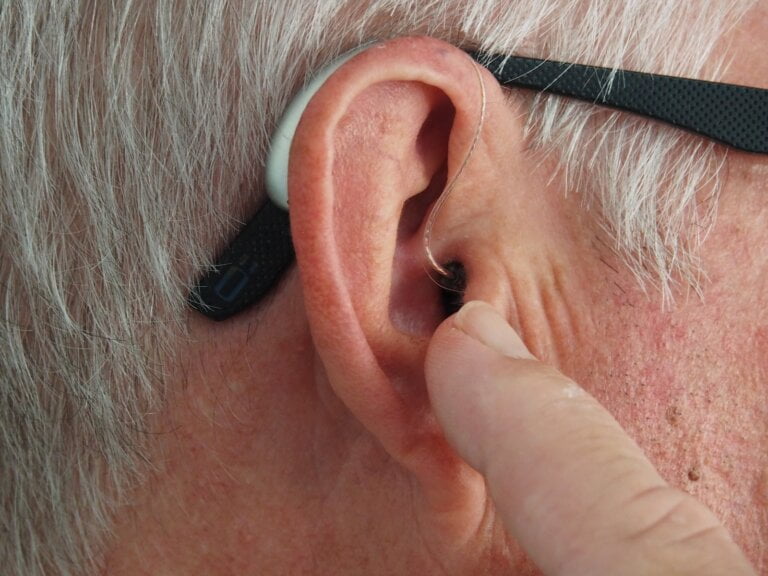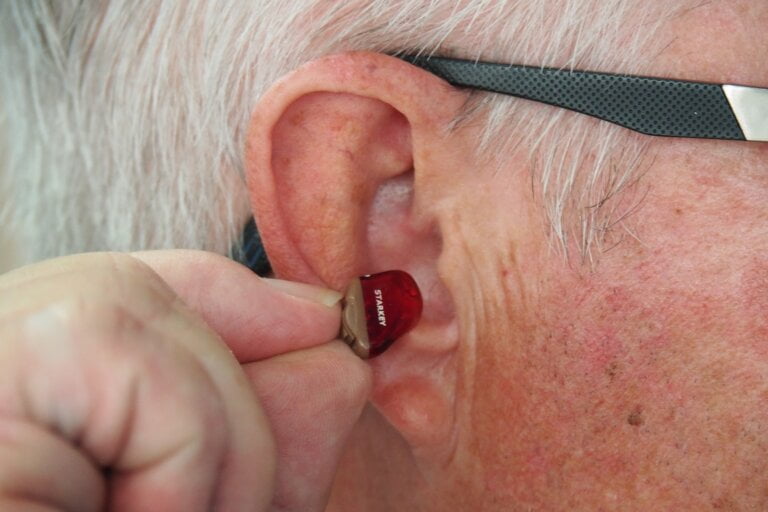Practical Experience: A Look into Apprenticeships in Manual Instrument Ear Wax Removal
Last Updated on 12th July 2023 by Admin
Apprenticeships have long been regarded as a valuable path for individuals seeking practical experience and hands-on training in various industries. In the field of manual instrument ear wax removal, apprenticeships provide a unique opportunity for aspiring professionals to develop their skills under the guidance of experienced mentors. This article delves into the world of apprenticeships in manual instrument ear wax removal, exploring the benefits, requirements, and the journey of becoming a skilled ear wax removal specialist.
What is Manual Instrument Ear Wax Removal?
Manual instrument ear wax removal, also known as ear syringing or ear irrigation, is a procedure performed by trained professionals to remove excess ear wax from the ear canal. Ear wax, or cerumen, is a natural substance produced by the body to protect the ear. However, when ear wax builds up and becomes impacted, it can cause discomfort, hearing loss, and other complications. Manual instrument ear wax removal involves the use of specialized tools and techniques to safely and effectively remove the excess wax.
When performing manual instrument ear wax removal, professionals utilize various tools such as curettes, forceps, suction devices, or irrigation kits. These tools are designed to facilitate the safe and efficient removal of ear wax without causing harm to the delicate structures of the ear. Additionally, professionals need to have a thorough understanding of the anatomy and physiology of the ear to ensure that the procedure is performed correctly.
The Importance of Practical Experience
In any medical or healthcare-related field, practical experience is of utmost importance. While theoretical knowledge is essential, it is the hands-on application of that knowledge that truly hones one’s skills and prepares them for real-world scenarios. This is where apprenticeships in manual instrument ear wax removal play a crucial role. By allowing individuals to work alongside experienced professionals, apprenticeships provide the ideal platform for gaining practical experience and developing the necessary skills for a successful career in this field.
During an apprenticeship in manual instrument ear wax removal, apprentices have the opportunity to observe and assist experienced professionals in performing the procedure. This hands-on training enables them to gain real-world experience in a controlled environment. They learn how to handle the specialized tools, understand the unique challenges that may arise during the procedure, and develop the dexterity and precision required to perform the task effectively.
Furthermore, practical experience gained through apprenticeships allows individuals to develop critical thinking skills and problem-solving abilities. They learn to assess each patient’s unique situation and adapt their techniques accordingly. This experience also helps them understand the importance of patient care and communication, as they interact with individuals who may be experiencing discomfort or anxiety during the procedure.
Benefits of Apprenticeships in Manual Instrument Ear Wax Removal
1. Hands-on Training
One of the most significant benefits of apprenticeships is the opportunity to receive hands-on training. In manual instrument ear wax removal, this practical experience allows apprentices to develop proficiency in using specialized tools, understanding the anatomy and physiology of the ear, and performing the procedure safely and effectively. By working alongside experienced mentors, apprentices gain invaluable insights and learn the nuances of the trade.
During their apprenticeship, individuals have the chance to practice their skills under the guidance of experienced professionals. They learn the proper techniques for inserting instruments into the ear canal, manipulating the tools to remove the wax, and ensuring patient comfort and safety throughout the process. Through repetition and feedback from their mentors, apprentices gradually refine their skills and build confidence in their abilities.
2. Mentorship and Guidance
Apprenticeships offer the advantage of mentorship and guidance from seasoned professionals. Mentors serve as a source of knowledge, providing valuable feedback, advice, and support throughout the apprenticeship journey. They share their expertise, tricks of the trade, and best practices, ensuring that apprentices receive comprehensive training and develop the skills necessary to succeed in manual instrument ear wax removal.
Mentors play a crucial role in shaping the apprentices’ professional growth by providing personalized guidance and constructive criticism. They help apprentices identify areas for improvement and offer tailored instruction to address specific challenges. Furthermore, mentors can share their own experiences and insights, providing valuable perspective on the industry and its best practices. This mentorship fosters a supportive learning environment and accelerates the apprentices’ development as skilled professionals.
3. Industry Connections
During an apprenticeship, apprentices have the opportunity to build connections within the industry. These connections can be instrumental in securing future employment or opening doors to other career opportunities. The hands-on nature of apprenticeships allows individuals to showcase their skills and work ethic, making a lasting impression on potential employers or colleagues.
Through their interactions with experienced professionals, apprentices can establish professional relationships and network with individuals who have established careers in the field. These connections can provide valuable insights into job opportunities, professional development programs, or specialized training courses. By actively engaging with industry professionals, apprentices can expand their professional network and increase their chances of success in the field of manual instrument ear wax removal.
How to Become an Apprentice in Manual Instrument Ear Wax Removal
Becoming an apprentice in manual instrument ear wax removal requires dedication, commitment, and a genuine interest in the field. Here are the general steps to pursue an apprenticeship:
-
Research and Identify Apprenticeship Programs: Begin by researching various apprenticeship programs in manual instrument ear wax removal. Look for programs that align with your goals, offer comprehensive training, and have a good reputation within the industry.
-
Meet the Eligibility Requirements: Each apprenticeship program may have specific eligibility requirements, such as minimum age, educational qualifications, or health assessments. Ensure that you meet these requirements before applying.
-
Submit an Application: Once you have identified a suitable apprenticeship program, submit an application that includes your personal information, educational background, and any relevant experience. Take the time to showcase your passion for the field and your commitment to learning.
-
Attend Interviews and Assessments: If your application is shortlisted, you may be called for interviews or assessments to evaluate your suitability for the program. Be prepared to answer questions about your motivations, goals, and willingness to commit to the apprenticeship.
-
Begin the Apprenticeship: Upon acceptance into the program, you will embark on your apprenticeship journey. This typically involves a combination of classroom instruction and hands-on training, allowing you to gradually develop your skills and knowledge.
-
Gain Experience: As you progress through your apprenticeship, you will gain valuable experience by working under the supervision of experienced professionals. Take advantage of every opportunity to learn, ask questions, and refine your techniques.
-
Completion and Certification: Once you successfully complete your apprenticeship, you may receive a certificate or qualification, depending on the program. This recognition serves as evidence of your training and can enhance your employability in the field of manual instrument ear wax removal.
Conclusion
Apprenticeships in manual instrument ear wax removal offer aspiring professionals a unique opportunity to gain practical experience and develop their skills under the guidance of experienced mentors. The hands-on nature of these apprenticeships allows individuals to become proficient in using specialized tools, understanding ear anatomy, and performing safe and effective ear wax removal procedures. By following the steps outlined and committing to the journey, one can embark on a rewarding career as a skilled ear wax removal specialist, armed with the practical experience and expertise necessary for success.
Note: This revised article is provided in markdown format.
FAQ
1. What is manual instrument ear wax removal?
Manual instrument ear wax removal, also known as ear syringing or ear irrigation, is a procedure performed by trained professionals to remove excess ear wax from the ear canal. It involves the use of specialized tools and techniques to safely and effectively remove the wax.
2. Why is practical experience important in manual instrument ear wax removal?
Practical experience is important in manual instrument ear wax removal because it allows individuals to apply their theoretical knowledge in real-world scenarios. It helps them develop skills, dexterity, and precision required for the procedure. It also helps in critical thinking, problem-solving, patient care, and communication skills.
3. What are the benefits of apprenticeships in manual instrument ear wax removal?
The benefits of apprenticeships in manual instrument ear wax removal include hands-on training, mentorship and guidance from experienced professionals, and the opportunity to build industry connections. Apprentices gain proficiency in using specialized tools, understanding ear anatomy, and performing safe procedures.
4. How can I become an apprentice in manual instrument ear wax removal?
To become an apprentice in manual instrument ear wax removal, you need to research and identify apprenticeship programs, meet the eligibility requirements, submit an application, attend interviews and assessments, begin the apprenticeship, gain experience under supervision, and complete the program to receive a certificate or qualification.







